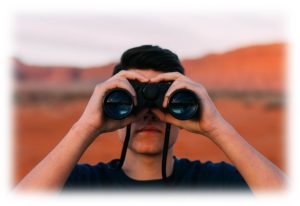One of the potential tools for the situation analysis in strategic planning is the PEST analysis. No, this is not looking for insects and it is not referring to the competitors that make your life difficult. PEST analysis is shorthand for Political, Economic, Social and Technological analysis. It is often a part of the market and competitive environment analysis in a strategic planning process.

The big idea in PEST analysis is that a firm and its leaders should consistently have an outer focus that scans the horizon and remains aware of the trends and factors that are or may be impacting the business now or in the future. The strategic planning process provides a reminder to look at the big picture factors that might affect the market or business conditions and incorporate the potential effect and necessary actions related to those macro-factors. While often referred to under the acronym of PEST, this analysis may also extend into other areas that might affect the market or business such as legal, environmental, ethical, etc. although these can often be included under the primary PEST categories.
Too often firms can operate with a set of blinders, becoming too complacent in believing that nothing can change the way that the market has traditionally operated or the way that customers have functioned. Another risk is the result of being unwilling to face reality; we might see the changes but refuse to believe them. The PEST factors are not always threats; they can also present opportunities to take advantage of a changing situation to gain an advantage in the market.
Political factors can include rules and regulations that might change the way that business can operate as well as international issues. These might include things such as:
- Employment law
- Environmental regulations
- Trade regulations
- Tax policies
- Governmental leadership
- Political stability
- International relations
Economic factors can include the macroeconomic environment that might affect the buying power of potential customers or the firm’s cost of capital. These might include things such as:
- Inflation rates
- Interest rates
- Economic growth
- Disposable income
- Unemployment level
- Foreign exchange rates
Social factors include demographic and cultural aspects that affect the external environment. They affect the way that people think and operate, impacting both buying decisions and employment practices. Social factors can be a broad range of things that might include:
- Age distribution or demographics
- Population growth
- Lifestyle trends
- Consumer attitudes and opinions
- Consumer buying patterns
- Fashion and role models
- Ethnic/religious factors
- Ethical issues
Technological factors are all of the changes of technology on a global basis. These can change a market or even obsolete a market. They can change the power or position of competitors and potential customers. Technology can affect any point in the value chain with the potential, for example, of eliminating the need for a customer’s product or services, thus impacting down the chain. Technological factors can include things such as:
- Research and development
- Trends in global technological advancements
- Associated or substitutionary technologies
- Legislation in technological fields
- Patents
- Licensing
- Consumer preferences
- Automation and manufacturing technologies
No doubt you can think of examples where the failure to comprehend or appreciate such PEST factors have eliminated or greatly impacted businesses, e.g., Google’s failure in China due to underestimating the political challenges, countless companies that have disappeared due to lower-priced imports, Blockbuster’s failure to see the shift to on-demand films, or the many phone and tech device manufacturers that missed the integrating of technologies in the iPhone. Admittedly, some of these factors can seem a greater risk to large, international companies but no firm can afford to ignore the potential threats or opportunities that might surface in the market environment that affects them.
Do you have an outer focus that is aware of threats and opportunities on the horizon?

Add your comment